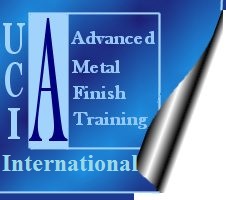Mig Welding Equipment Setup:
After connection the grounding clamp, power source, welding wire, and
compressed CO▓ tank, the power pack is then
switched to the "on" position. At this time, welding temperature and
wire feed can be adjusted to proper setting for correct wild penetration.
A piece of scrap metal with the same thickness as the stock to be welded
can be used to determine the weld penetration. Weld penetration
should be as close to 100% of the stock as possible.
Weld Penetration:
Weld penetration is achieved when the welding wire and the chosen
stock, or material to be welded, have been heated to the point of
molecular cohesion. This means that the welding wire and the desired
stock have been heated to a point when they combine to form a single unit,
or "fuse". The molecules of the metal stock and the welding wire
have completely combined together.
Positioning:
Correctly locating the part or component to be welded. Must be
positioned correctly the first time, the part cannot be moved after it has
been welded.
Clamping:
Holding parts together. Can be hand clamps or C-clamps.
Tacking:
Applying a small spot of weld to hold the part or component.
Once the small tack weld has been made, part location can be checked for
correct location and fit prior to finish welding. Caulking:
Hammering down the metal before and after it is welded. Welding:
Joining two pieces of metal with an even bead, making sure there is
good weld penetration into the base metal. Heat:
The heat setting will vary with different thickness of metal, and must
be set properly so the weld does not burn through the metal, creating a
larger repair. Wire Feed:
If the wire feed is not set at the proper speed, relative to the heat, a
poor weld will be the result. When the feed is too slow, cold weld
build-up will result. When the feed is too fast, splatter will
result. Gas Pressure:
Gas pressure must be set properly to achieve a good weld. It
must have the right amount of CO▓ to protect
the molten metal. The CO▓ gas
actually starves the weld of oxygen which decreases the temperature of the
weld, assisting the weld in achieving proper penetration.
Mig Welding Process Procedure:
When all preliminary steps of the welder setup, stock position
clamping and caulking have been achieved, actual welding can begin.
The metal insulator covering the tip of the welder may be held directly
against the metal stock to be welded, or to view the weld as it is
created, the welding tip can be tilted to an approximate 45 degree angle
to expose the welding point. Depressing the control trigger
initiates the wire feed, CO▓ gas flow,
and wire arc ignition. For Spot
Welding:
The welding tip is held in a single position as the welder is
activated, until the desired penetration is achieved.
For Bead Welding:
The welding tip is drawn slowly backward as the weld is activated,
allowing the weld to "pool" or "puddle" into a continuous form. Weld
penetration should also be properly maintained in bead welding. When
the desired length and depth of the weld has been reached, the wild is
complete.
[Top]
|

